Students Share Research at Academic Showcase and Honors
SASH provides a forum for students to present their scholarly and creative work before an audience of peers
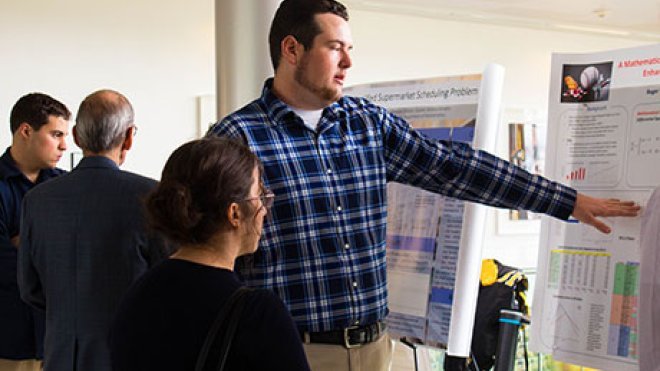
BRISTOL, R.I. – At RWU, students aren’t just working on research in a bubble and their findings don't just sit on a professor's desk. They dig deep into the issues, conduct hands-on research and fieldwork, and then get the experience of presenting their work to faculty, staff and peers at the Student Academic Showcase and Honors (SASH).
From multimodal and poster sessions to oral presentations, the undergraduate and graduate students presenting their research projects at SASH this week say the opportunity provides another layer of knowledge and skills beyond the fieldwork and research experience, preparing them for a successful launch into the workforce or to pursue an advanced degree.
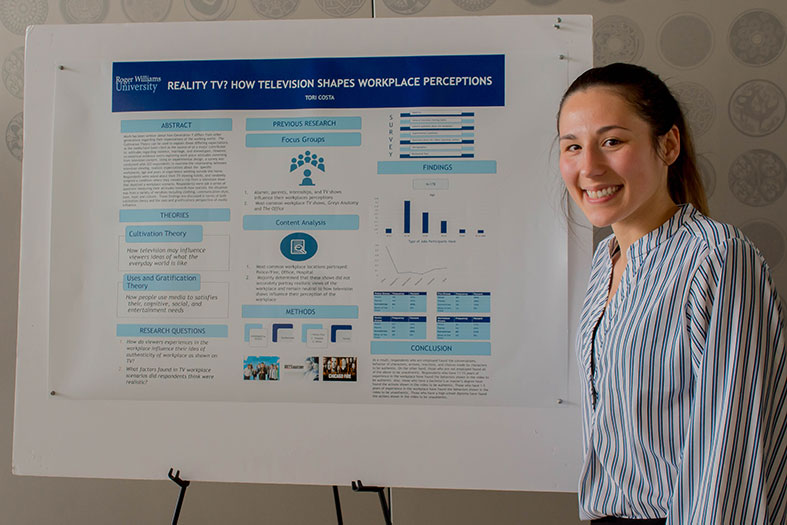
Tori Costa, a senior public relations major, conducted online surveys on whether representations of workplaces in popular television programs like Grey’s Anatomy and The Office are authentic. Surprising to her, people with white-collar jobs responded that the television shows accurately depict the workplace, while those she surveyed with less workplace experience believed it to be inauthentic – the opposite of what she expected her results to demonstrate, presuming those with more experience would deem them less credible.
“This just shows me how real research is important,” says Costa, who is working part-time for Regan Communications Group in Providence while she completes her degree this semester. “With messaging in public relations work, I’ll be able to use software like what I used in this project to run similar test to understand how our messages are being perceived by our audiences.”
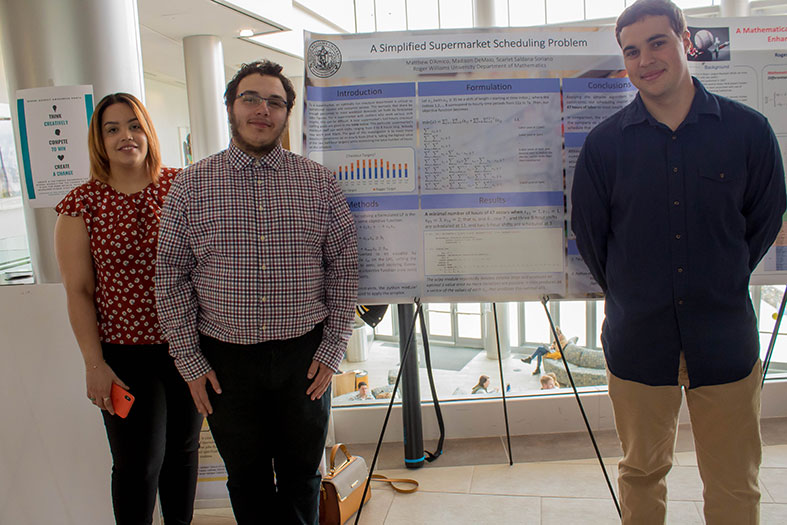
With Shaw’s Supermarket as a partner, Matthew D’Amico, Madison DeMaio and Scarlet Saldana Soriano created a scheduling program through a math-based algorithm that determined the most efficient employee workflow during peak business hours.
“By doing this project, we could apply what we were learning to a real issue, and it was great to see that the results of our algorithm were so close to Shaw’s scheduling algorithm,” said Soriano, a senior forensic science major and math minor.
“Talking about the research [with faculty and students at SASH] builds my confidence in presenting my work. Going on to grad school, this will give me more confidence to talk about what I’m studying,” said DeMaio, a junior math major.
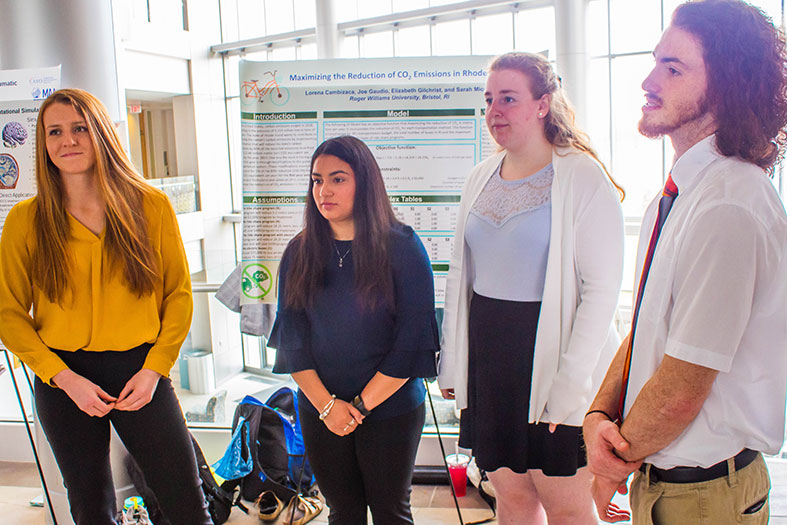
Investigating ways to reduce the maximum amount of transportation-produced CO2 emissions in Rhode Island, Lorena Cambizaca, Joe Gaudio, Elizabeth Gilchrist, and Sarah Micucci analyzed solutions from implementing more bike-sharing and electric vehicles to replacing RIPTA’s diesel buses with electric versions. With the goal of reducing statewide emissions by just one percent, they ran multiple scenarios through a linear modeling program and determined the most cost-effective solution was to equip Rhode Islanders with 25,000 bicycles.
“We wanted to take on a big problem that’s relevant to everyone. Our solution would reduce more than 131,000 metric tons of CO2 in just one year. Even if we implemented less of the program, it would still be a significant amount that would be reduced,” said Gilchrist, a double major in biology and applied mathematics.
“When you scale it back to a state, and such a small state, and still see how many bikes you would need to implement, you realize how ginormous the problem is and how difficult it’s going to be to make a difference,” said Micucci, who majors in biology and Spanish.
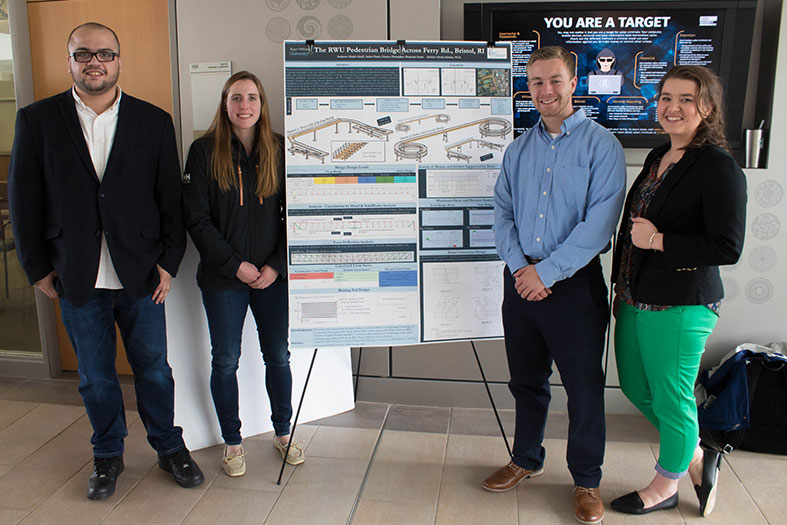
While designing a pedestrian bridge connecting the Bristol campus to university land across Ferry Road, engineering students Khalid Alarifi, Amber Peach, Eleanor Phetteplace and Benjamin Sauter had multiple variables they needed to consider. Although a theoretical project, they built real-world skills as they took into account its visual impact along a scenic highway, historic district regulations, creating a minimal footprint, as well as structural considerations and the effects from weather.
“We learned new software programs and met with professional engineers to share our ideas and get feedback from them. We learned so much researching and knowing what we had to research to design this, like loading effects, making highway designs, and how to read code,” Sauter said.
“We created the design from start to finish, which directly correlates to what we’d do in the real world,” said Phetteplace. “And it was an iterative process, where we’d get to one point in the design and realize it doesn’t work, so we’d have to go back and make changes that affected everything else.”